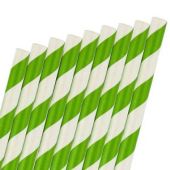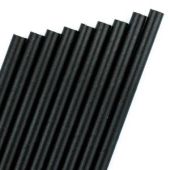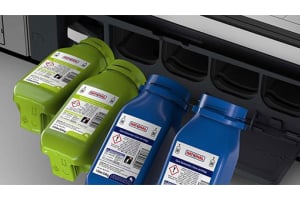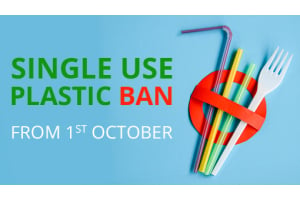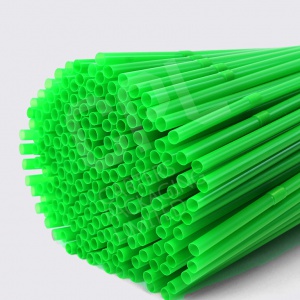
With continuing media focus on plastic pollution, the UK government has passed critical legislation to ban the use of single use plastic straws. This ban will see significant changes across the catering and hospitality industry with regards to drink service.
Since the changes were announced, the industry has already responded, with a variety of ‘biodegradable straws’ coming to market that claim to solve the plastic pollution problem. However, as businesses have started to adopt these new materials, we’ve seen several issues start to be raised around the use of the term ‘biodegradable’, and what it means for the environment.
This article looks at the way the industry is reacting to change, with a focus on the types of material being used to manufacture ‘biodegradable straws’ and ‘compostable straws’ and what they might mean in terms of the environment.

The Problem
According to the UN, between 8 to 12 tonnes of waste plastic are dumped into the ocean each year and if the current rate continues, there will be more plastic than fish in the sea by 2050. Fuelled by the media there is now a growing movement amongst consumers to become increasingly environmentally conscious when making purchases.
Between 8 to 12 tonnes of waste plastic are dumped into the ocean each year
Whilst much of the focus has been around food packaging, eating and dining out has not escaped attention as it is estimated that 8 billion plastic straws are discarded in Britan every year, with a quarter of those straws being used in London.

Biodegradable Straws
The most popular products currently available are marketed as ‘biodegradable’, a term consumer often think is synonymous with ‘environmentally friendly’. However, purchasers need to be aware that it’s not always quite as clear cut….
- The term biodegradable does not always mean that a straw will naturally break down if left in the environment. For example, some CPLA or PLA biodegradable straws need to go through an industrial reclaiming process to be broken down before they can be released into the environment safely. This raises several issues:
- These processes often require significant amounts of energy and therefore could be damaging to the environment in other ways.
- Not all local authorities have access to the appropriate equipment and processes to safely breakdown the biodegradable materials used. This means that they can sometimes still end up in landfill, where the straws won’t degrade naturally.
- Many businesses do not have appropriate mechanisms to safely separate biodegradable straws from other waste. Given their appearance, and the points above, this means that the materials cannot be easily separated at the recycling centre and then end up in landfill as general waste.
- Many biodegradable materials are not necessarily environmentally friendly. For example:
- Some biodegradable straws are not manufactured entirely from a 100% biodegradable content. For example, they may still be up to 5% traditional plastic.
- One commonly used substance is called REPA. This is manufactured from ground seashells. Although not necessarily environmentally damaging, this material must be sourced safely and sustainably. A fact which you must ensure your supplier can guarantee.

Paper Straws
Typically, paper straws are manufactured from 100% recycled paper. This means that they are 100% compostable and will break down naturally in the environment without any human intervention.
If the product is sustainably sourced from FSCS approved forestries, or made from recycled materials, then they provide an excellent solution to the problem!
Furthermore, the global recycling infrastructure has significant experience working with paper and there are numerous systems in place across the UK and the rest of the world to ensure paper waste is separated and handled in an environmentally friendly way. This significantly increases the chance that your paper straw will be recycled.
Another key point to note is that customers readily recognise paper straws as recyclable when collecting their drink. This is important as many customers will not always identify a biodegradable straw as such when touching it, given their such close resemblance to plastic.
Finally, production of paper straws makes room for a range of creative designs that can really change a customer experience. Paper straws are available in a range of coloured and printed designs, shapes and styles from UK stock lines. They can even be custom printed, or logo branded to suit your establishments décor.
Our Conclusion
Paper Straws
- Customers identify as eco-friendly
- Can be sustainably sourced and manufactured
- Widely recycled across the UK
- Easy to ensure waste separation
Biodegradable Straws
- Manufacturing process not necessarily environmentally friendly
- Not as widely recycled and often end up in landfill sites
- Often only in plain black or clear colours
- Prices increasing rapidly as demand for raw materials saw






